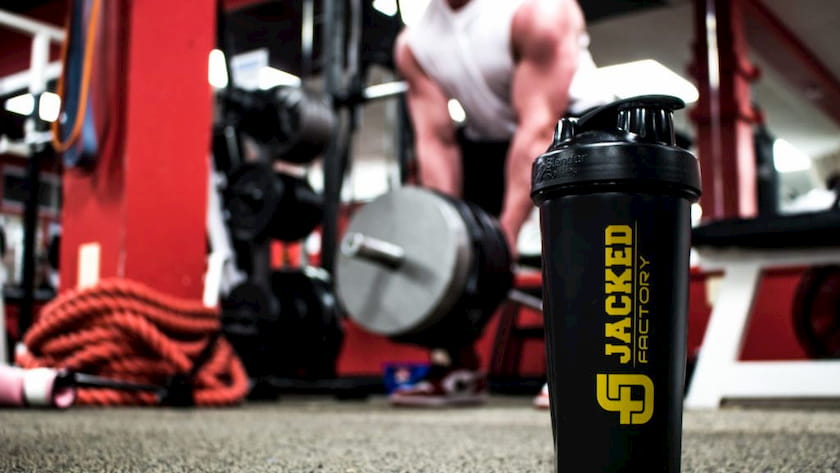The research is in, and it shows that HIIT (High-Intensity Interval Training) is the best way to lose fat.
 Whether you’re heavily into your training or a complete beginner, you hopefully understand that the calories you get from eating steak aren’t the same as when you eat a stack of pancakes.
Your body processes them differently, and 1000 calories of spinach isn’t going to have anywhere near the effect on your body that 1000 calories of Lucky Charms will.
And the same goes for burning calories. What you burn walking or jogging aren’t the same as what you burn on an all-out sprint.
Your body uses different energy stores from the different types of food you eat.
Whether you’re heavily into your training or a complete beginner, you hopefully understand that the calories you get from eating steak aren’t the same as when you eat a stack of pancakes.
Your body processes them differently, and 1000 calories of spinach isn’t going to have anywhere near the effect on your body that 1000 calories of Lucky Charms will.
And the same goes for burning calories. What you burn walking or jogging aren’t the same as what you burn on an all-out sprint.
Your body uses different energy stores from the different types of food you eat.
Let’s cut through the noise, and get straight to the point:
There is absolutely no benefit to going for long jogs or extended cardio sessions unless it’s to scratch your itch of going for a long jog. That’s it. Unless you like the painstaking agony and breathlessness of continually running around the block and explaining to your doctor why your knee’s hurt (again), you’re going to want to stop your steady state cardio right now. This article is going to prove to you why that’s not purely hyperbole, but actual fact.Calories Aren’t Created Equally
 Whether you’re heavily into your training or a complete beginner, you hopefully understand that the calories you get from eating steak aren’t the same as when you eat a stack of pancakes.
Your body processes them differently, and 1000 calories of spinach isn’t going to have anywhere near the effect on your body that 1000 calories of Lucky Charms will.
And the same goes for burning calories. What you burn walking or jogging aren’t the same as what you burn on an all-out sprint.
Your body uses different energy stores from the different types of food you eat.
Whether you’re heavily into your training or a complete beginner, you hopefully understand that the calories you get from eating steak aren’t the same as when you eat a stack of pancakes.
Your body processes them differently, and 1000 calories of spinach isn’t going to have anywhere near the effect on your body that 1000 calories of Lucky Charms will.
And the same goes for burning calories. What you burn walking or jogging aren’t the same as what you burn on an all-out sprint.
Your body uses different energy stores from the different types of food you eat.
HIIT Burns The Right Calories
If you’ve ever been on a treadmill or spoken to your standard commercial gym personal trainer, you’ve seen the little chart that tells you what heart rate is best for the result you want. You’ll typically weigh it up between cardiovascular training and fat burning. Each ‘Zone’ providing a different set of results. You’ve probably been through the whole rigmarole of putting in your height and weight, and holding onto the heart rate monitors for dear life. This results in the little reading on the treadmill that tells you how many calories you’ve burned on your 4-mile run. Well, that calorie counter is only partially right, in the fact that you do burn calories when you train. It doesn’t matter what you’re doing: you’re going to burn calories. But just like how your body processes calories differently when you eat them, the same happens when you burn them. The 100 calories you burned walking or jogging hasn’t had the impact on your body you think it has, and it’s an ineffective way of burning fat. You stopped burning those calories as soon as you stepped off the treadmill, which made it mostly a waste of time. And, you’ve only burned off the equivalent of a snack-sized KitKat, which is like trying to put out a fire with teardrops. So, calories in and calories out isn’t the whole fat burning argument, and there is much more to it.The Science Behind the Story
At a basic level, the studies conducted at Laval University, East Tennessee State University, Baylor College of Medicine and the University of New South Wales all came to the same conclusions: People who did shorter, high-intensity sessions lost more body fat in the same period of time than those who did longer, low-intensity sessions. Although scientists aren’t quite sure why this happens, nor do they fully comprehend all the benefits, they have managed to determine a few more benefits to it:- Improved muscular insulin sensitivity
- Improved muscular fat oxidation
- Suppressed appetite post training
- Greater spikes in growth hormone production
The Final Nail in the Coffin
The clever boys and girls at The University of Western Ontario show us the real benefits of HIIT, and how much more beneficial it can be. The study took 10 men and 10 women and had them train the standard 3 times per week. The first group performed between 4 and 6 30-seconds sprints on the treadmill, with a minimum of 4 minutes rest in between. The second group took the standard approach, and they performed 30 to 60-minutes of steady state jogging, at the presumed fat loss zone of 65% of the subjects VO2 Max. The end result: The first groups 4-6, 30-second sprints burned more fat than 60 minutes of running on the treadmill. That means that for 3 minutes work you can burn more body fat than 60 minutes work. Now, isn’t that good news?How Does HIIT Affect Gains?
One of the most common questions surrounding the HIIT training subject is ‘will it stop you from gaining muscle?’. Because, as is common knowledge, endurance training and muscle building don’t exactly go hand in hand. In fact, combining high levels of endurance training with your resistance-training plan can actually hamper your muscle and strength gains when you put the two in the same session. The longer the cardio session you take part in, the less your strength and size gains will be. To put that really simply: Long Cardio + You = Less Muscle. So, to make the most of our cardio, it needs to be as short as possible to keep the results from muscle building. HIIT is the only form of training that allows you to do this. As we just discussed, you only have to do 3 minutes of cardio to get the full effect, so it’s the answer to your prayers.How to Get the Best Results From HIIT
The most effective way to perform your HIIT? Get on the stationary bike. Not only is it the most comfortable, easy to manage, and least likely to get you injured, but it’s also scientifically proven to get you the best results. Turns out, the type of cardio you do (running, jogging, swimming, etc) has a bigger effect on the results you get than you would imagine. In fact, the recent study done at Stephen F Austin State University shows that the type of cardio you do can greatly affect your strength and size. Due to the use of some of the most dominant hypertrophy and strength producing muscles in the movements, it appears you can actually increase your strength and size gains by adopting this method. That being said, I’d suggest taking this approach to your HIIT Training:- Start off slow with 2-3 minutes of low resistance cycling
- Up the resistance to a minimum of a mid-range resistance (enough to challenge your breathing and your legs)
- Rest for at least 4 minutes or until your breathing returns to normal
- Repeat 4-6 times
- DO NOT finish on a sprint, let your heart rate come down with 2-3 minutes of slow pedaling




Leave a comment
All comments are moderated before being published.
This site is protected by hCaptcha and the hCaptcha Privacy Policy and Terms of Service apply.